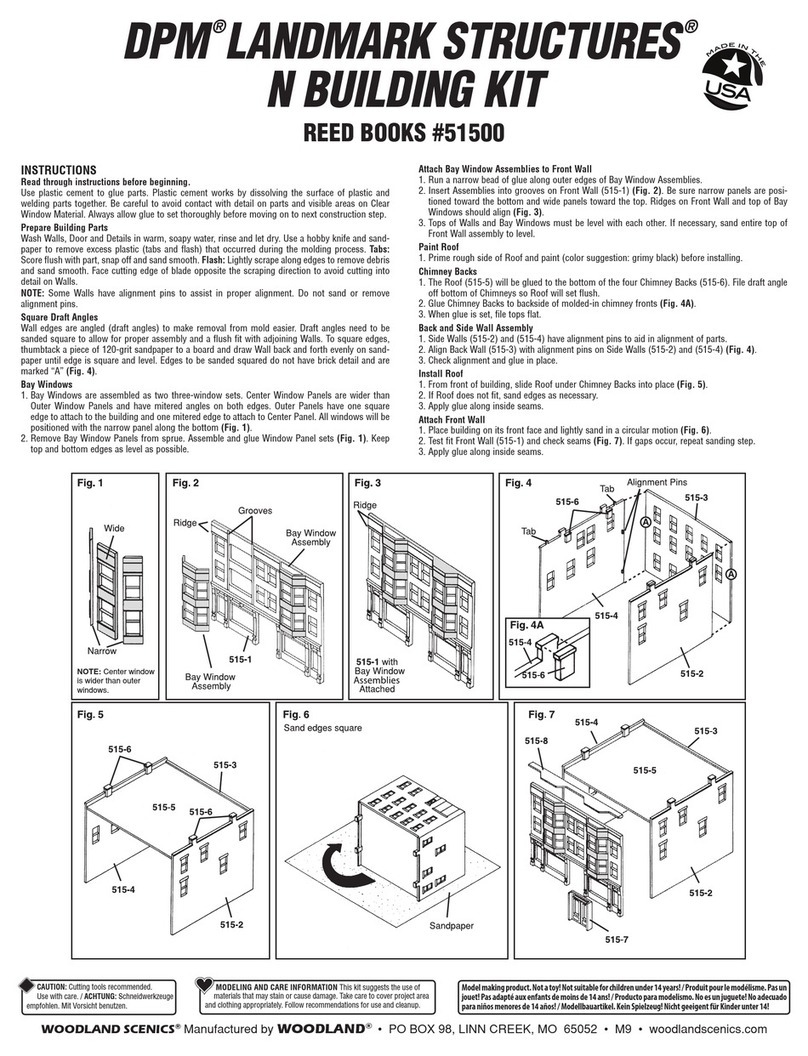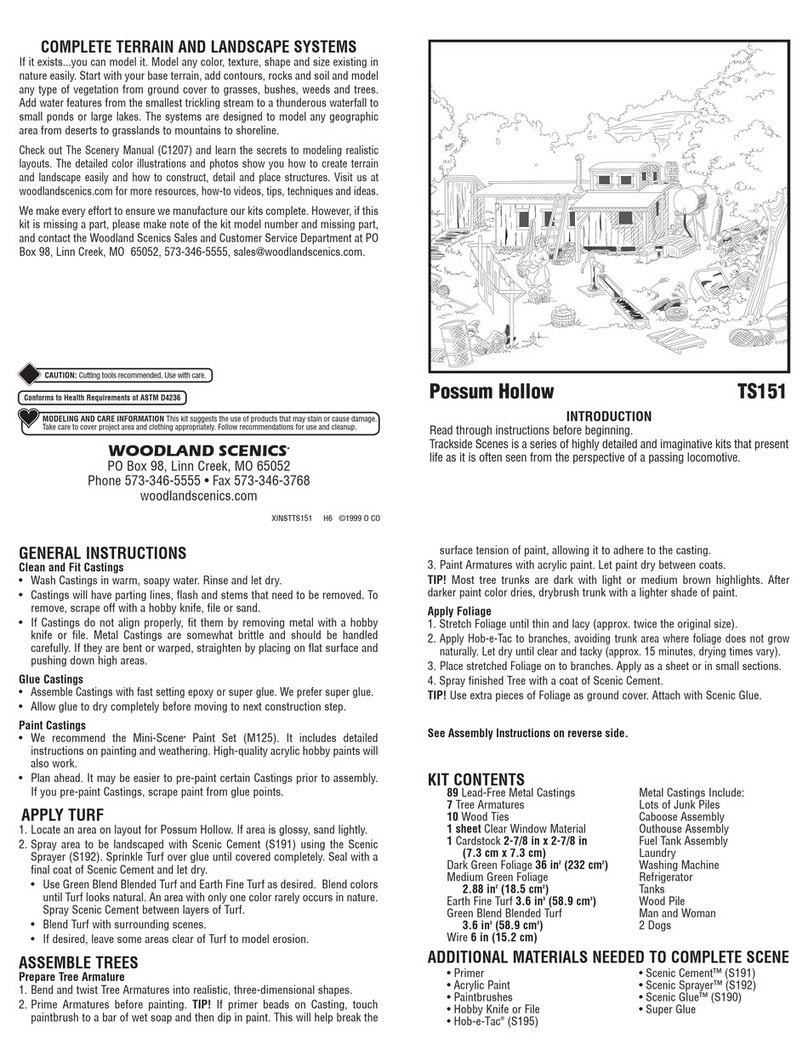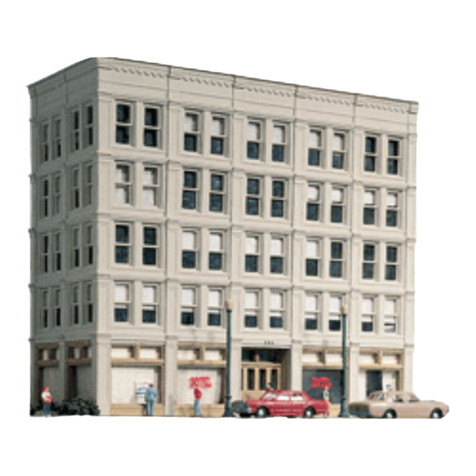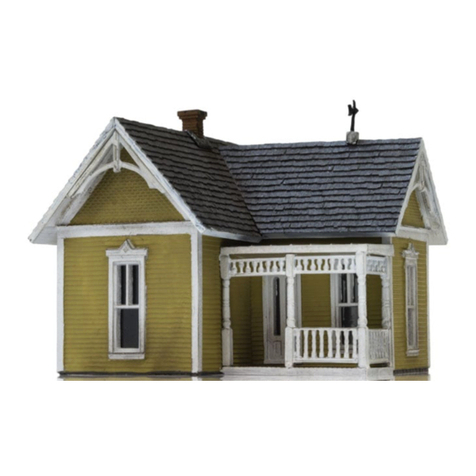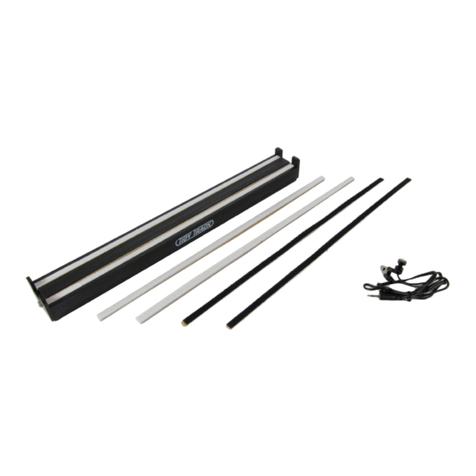
newspaper wads should create
a gentle slope which generally
follows the contours of the
back, sides and front of the
hardboard frame but should be
no higher than the illustrations
show. A shallow ditch will later
be formed along the back of the
sub-roadbed piece, so leave the
paper in this area lower than the
sub-roadbed (Fig. 12; pg. 7).
C. Use masking tape to hold
newspaper wads in place.
D. Trial fit the rock casting and track to check for sufficient clearance for the engine or
rolling stock you intend to display. See Fig. 17 (pg. 8) for placement. If you have too many
newspaper wads, remove some or push them in a little and re-tape to compact them.
Note: The track section included with this kit is HO scale. The kit can be adapted to
any other scale, O or smaller, by substituting your own section of the track for the one
included with the kit. Be sure to check track clearances carefully for any scale larger
than HO. If you plan to display something other than model railroad equipment, such as
military models, a road can be substituted for the track (Section 2D under Landscape).
2. PLASTER CLOTH
A. A hard terrain shell is applied next on top of the newspaper wads. Unroll the
Plaster Cloth. With scissors, cut off five 14" sections. One of these pieces should be split
lengthwise into two equal strips about four inches wide.
B. Cover the entire top surface of the diorama with Plaster Cloth. Notice that one side
of the Plaster Cloth is smooth and the other slightly bumpy. The Plaster Cloth should be
used bumpy side up, making more plaster available for smoothing into the contours. Apply
the Plaster Cloth, beginning on the left side of the diorama, with the pieces being laid from
the back to the front. Briefly dip one of the full width strips in a pan of water and lay it
on top of the newspapers along the left side of the diorama. Plaster Cloth can be stretched
to cover voids in the newspaper or indented in voids with slight finger pressure (Fig. 10).
Extend the edge of the Plaster Cloth approximately one inch outside the hardboard frame
on the side, front and back. Fold over the excess Plaster Cloth on top of itself to create a
clean, finished edge that is flush
with the edge of the hardboard
and is extra strong (Fig. 11).
Press this edge smoothly over
the Plaster Cloth to help fill
the holes and smooth out the
surface.
C. Dip a second section of
Plaster Cloth in water and place
on the diorama, overlapping
50% on the first sheet and 50%
on the newspaper area. Fold
over the excess Plaster Cloth to
6
Fig. 9
Fig. 10
Fig. 11

